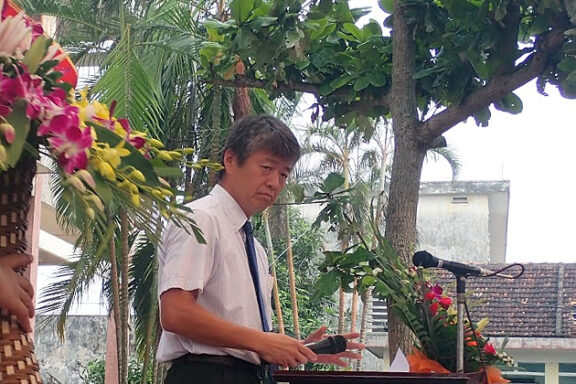Natsumi Shida
(JSPS Research Fellow, CSEAS Kyoto University / Graduate Student, ASAFAS Kyoto University)
My research, “‘Tradition’ and Living Culture of Uzbek Herders as seen through Carpet Weaving,” which was awarded the 15th JSPS Ikushi Prize, focuses on the living arts and techniques of people inhabiting the deserts (including steppes and mountains) of Uzbekistan, Central Asia. In my doctoral dissertation, I aim to write an ethnography of the Uzbek herders using a historical anthropological approach. How do they select, make, and use materials from their surrounding environment? I consider this sequence of activities to be a form of living culture that has been handed down from hand to hand among those who live in the region.
Who are the Uzbek Herders?
The term “Uzbek herders,” designated as a keyword for this study, may seem a little strange to those who have studied Central Asia. This is because Uzbeks are generally defined as “Turkic (Muslim) settled people” and Uzbekistan is often associated with a sedentary culture, as it is famous for its oasis cities that flourished along the Silk Road as well as its cotton cultivation. The frame of “nomads in the north and sedentary people in the south,” which is key to understanding the history of Central Asia, may have strengthened the connection between the territory of Uzbekistan, located in the south, and the image of Uzbeks as sedentary people.
However, as the term “nomadic Uzbeks” appears in historical studies, “Uzbek” was originally used as a generic term to refer to nomadic tribal groups that migrated south from the Kipchak steppe in the fifteenth and sixteenth centuries. Among the descendants of the nomadic tribes, including those who arrived in the region before them, some made a living by raising livestock through herding, maintaining a tribal identity and culture. It is precisely these people that this study focuses on. Among them, my informants mainly practice traditional carpet-weaving techniques in Boysun District, Surkhandarya Oblast, in the south of Uzbekistan. The country’s southern region, which has a complex and intricate topography, is considered to have stronger nomadic characteristics in terms of both environment and culture. In other words, this study sheds light on the nomadic culture of the southern region of Uzbekistan (southern Central Asia), which is generally thought of as a place of oasis settlements.
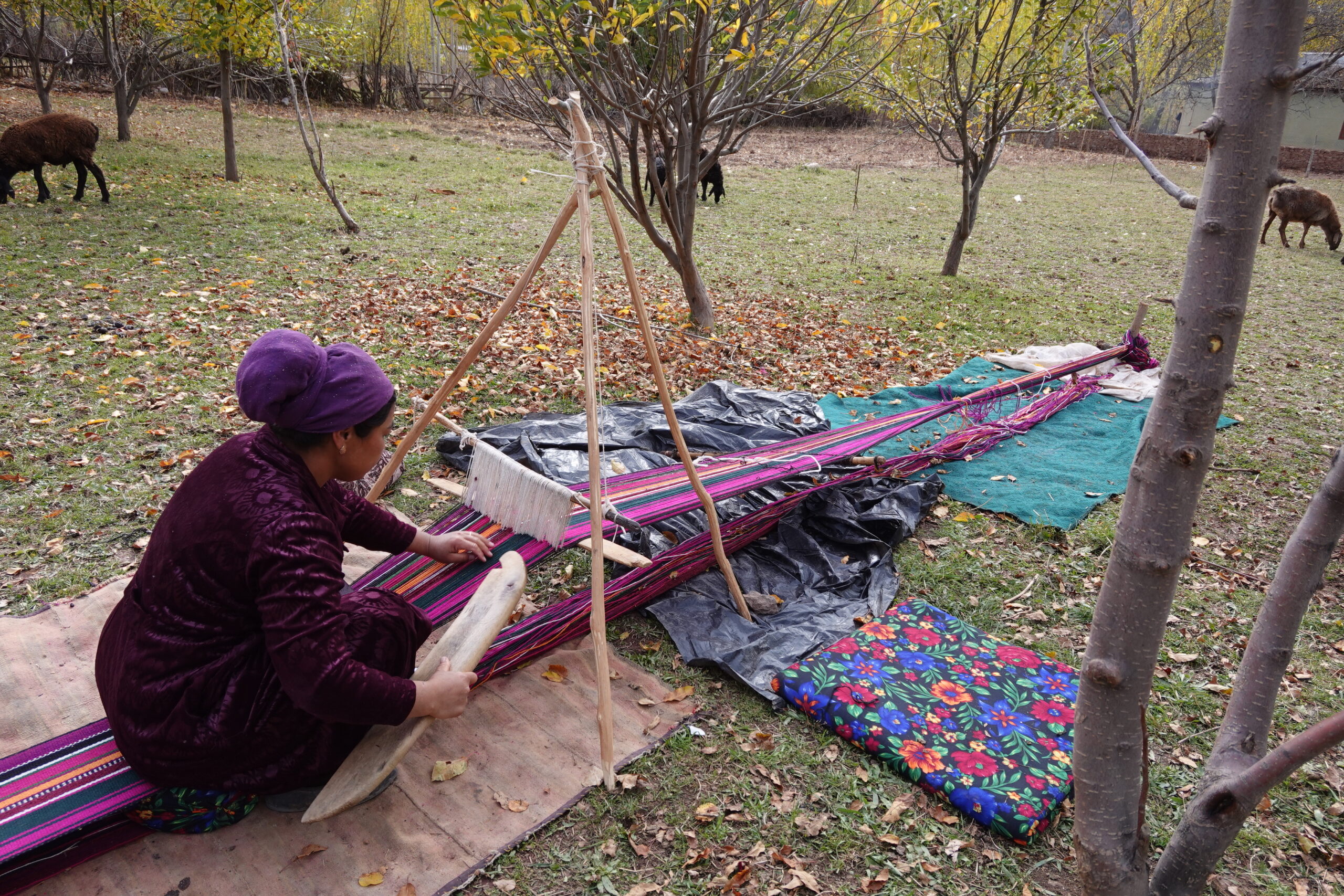
How was I able to find Uzbek herders, who are difficult to identify for foreigners? My interest has always been in the “Turkic nomads who made flat-woven carpets.” But the Covid-19 pandemic made it impossible for me to travel abroad during my masters program, which I entered in 2020. Instead, I concentrated on reading studies on Central Asian carpets in Russian. I came to understand that the markets of the oasis cities of Uzbekistan were the trading centers for Central Asian carpets and that carpet-producing areas were scattered across the rural areas (including grasslands) that spread out in concentric circles from these markets.
Among the works most referenced in Central Asian carpets studies,[1] one production area was rarely, if ever, mentioned: the southern region of Uzbekistan. Here, traditional carpet-weaving continues to be carried out today in the “cultural space of Boysun District,” as recognized by the UNESCO Intangible Cultural Heritage registration of 2008.[2] However, in 2022, the most recent information about the extent and nature of carpet-weaving in the area was based on a field survey carried out nearly 20 years before. Therefore, when it became possible to travel abroad, I visited Boysun, hoping to learn more and holding a copy of a Soviet-period military map I had obtained from the collection of the CSEAS Map Room. Unfortunately, carpet weaving had already been lost in some villages. I was able to confirm, however, that portable horizontal looms—the main components of which are just two planks—were still in use.
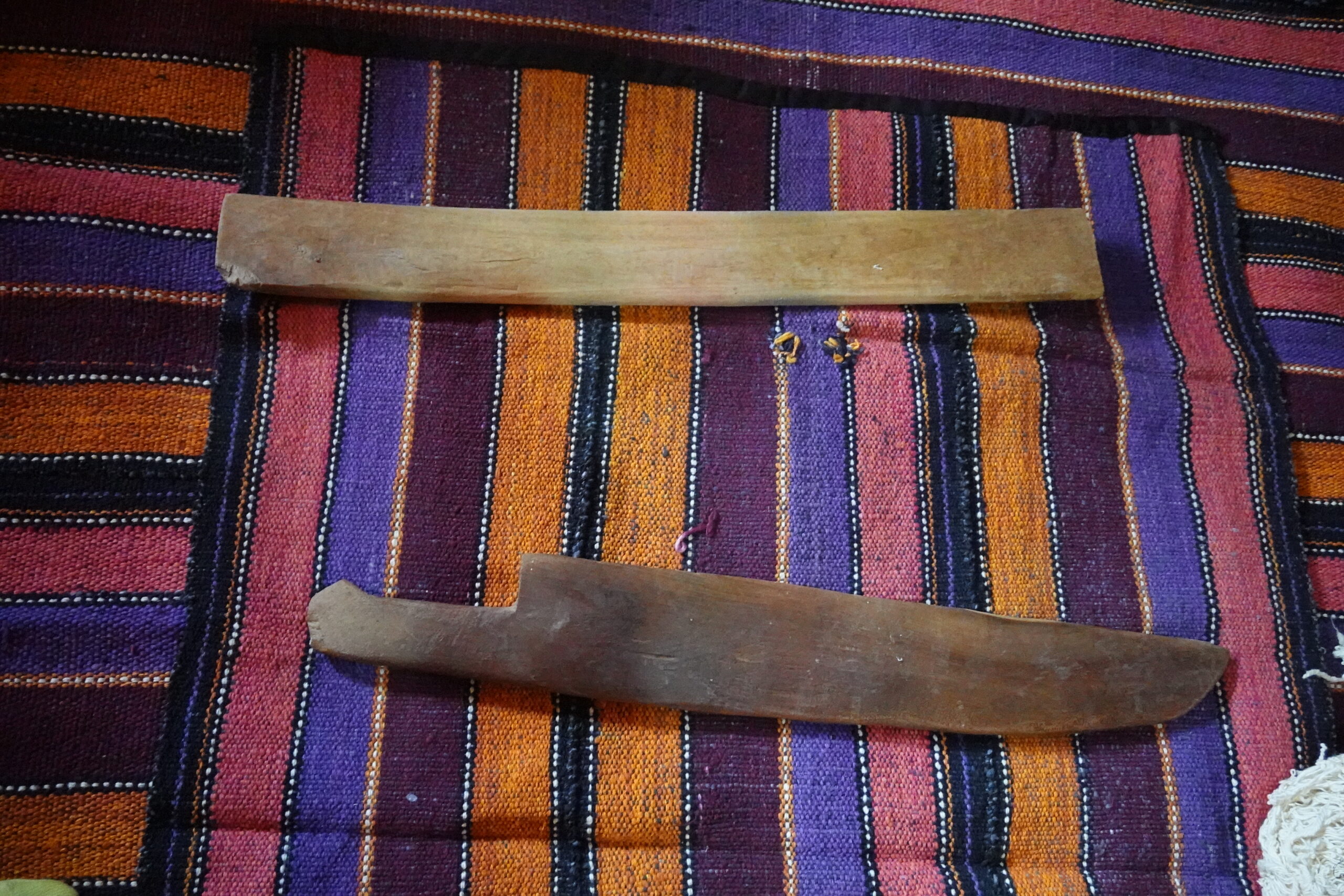
Learning while Living Together
As I had practical experience making clothes, I did not expect too much difficulty in conducting research through a participatory observational approach while learning carpet-making techniques firsthand. I was wrong. First, I was frequently not able to be present when carpets were being made. Uzbekistan’s residential management system for foreign researchers was stricter than I had imagined. Whenever visiting a research site (i.e., leaving the capital), I was required to obtain permission from the director of the host institution in advance and the maximum duration of stay was two weeks at a time. Another problem was the timing of the carpet-making process, which could not be precisely predicted. For example, herders could not say exactly when their sheep herds would return for shearing. Many factors also postponed the weaving, such as sudden guests, bad weather, or lack of manpower. When I had to return to the capital before the weaving activity started, I had no choice but to leave with tears in my eyes.
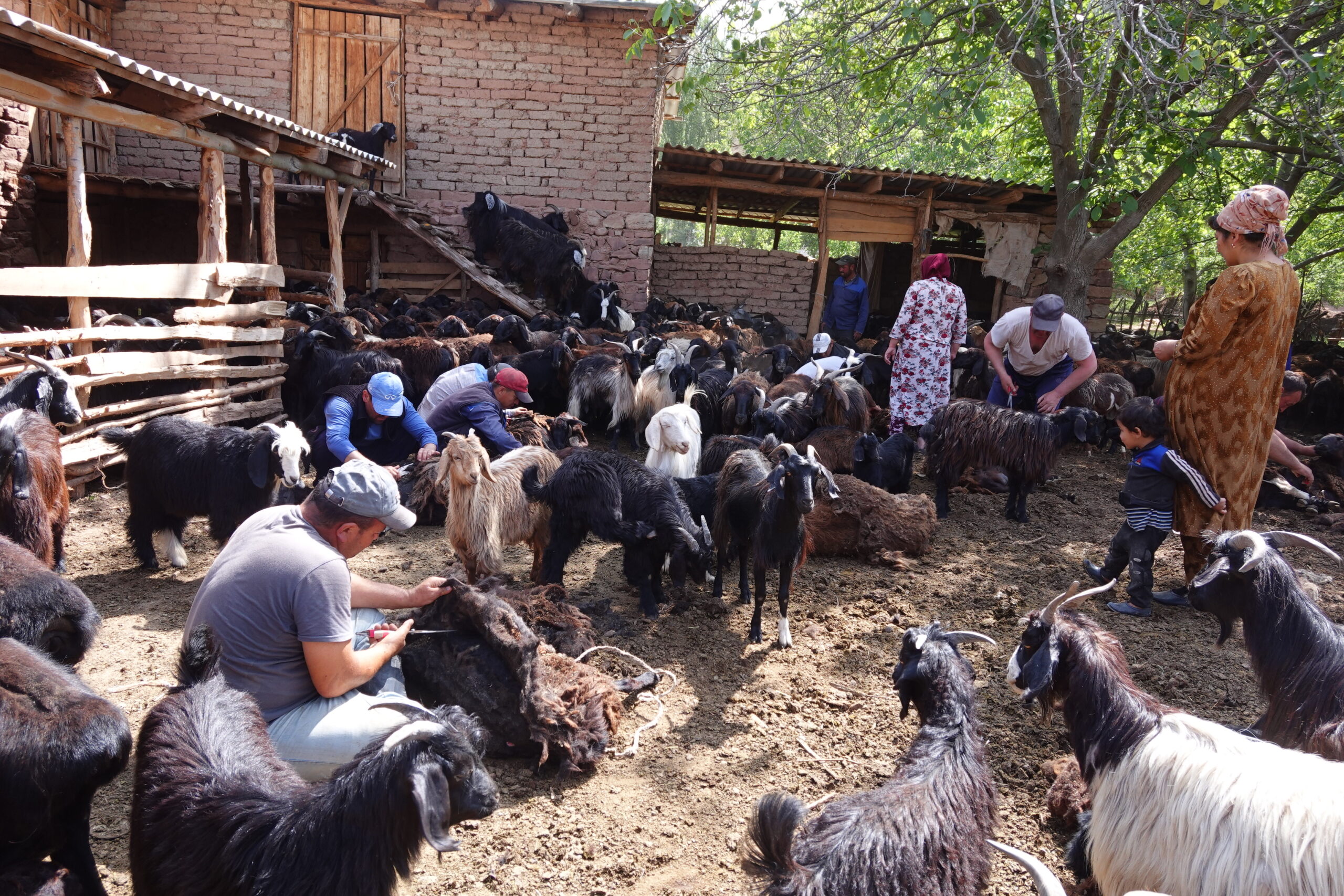
Second, I was carefully searching for a way to learn without disrupting village life and/or the economy. I waited for a natural opportunity to arise to learn about carpet making. I paid attention to details that at first glance seemed unrelated to carpet making, such as relationships with villagers who did not know how to weave (e.g., women who had married into the village from outside and men), and how villagers spent their time when they were not making carpets. I also often wondered how much of a reward (compensation) to give (or not to give) and in what form. If I had paid and asked to “weave a carpet for me” or “teach me how to make one,” the carpet weaving would have easily occurred. However, I did not want to be in that kind of position or have that kind of relationship with them, and above all, I wanted to observe carpet-making as part of daily life, a living activity. I tried to fit in with the local way of life as much as possible, and to learn in the way that locals do. I wore a headscarf like the village women, helped with the meal preparations, and ate from the same pot…. It was as if I had come to train as a bride.
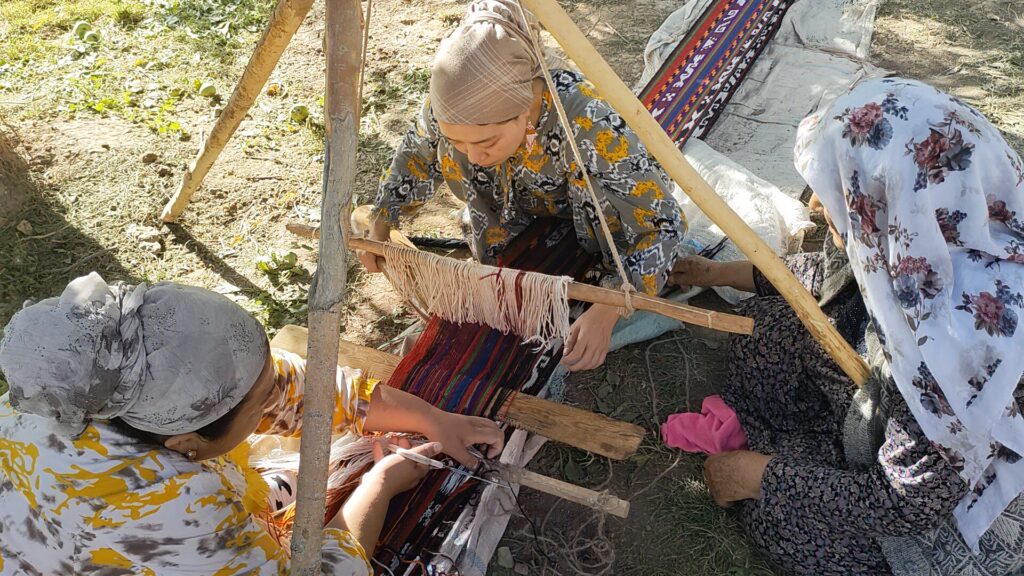
About one month before I was to return to Japan, I was able to learn the two techniques of flat weaving with patterns that I had longed for. As I had expected, actually weaving carpets allowed me to see carpet making from a holistic perspective. I not only came to understand the structure of the weave, which I could not fully do simply by looking at it, but I also learned what the weaver pays attention to and the meaning of the background that flows when the weaver is not at the loom.
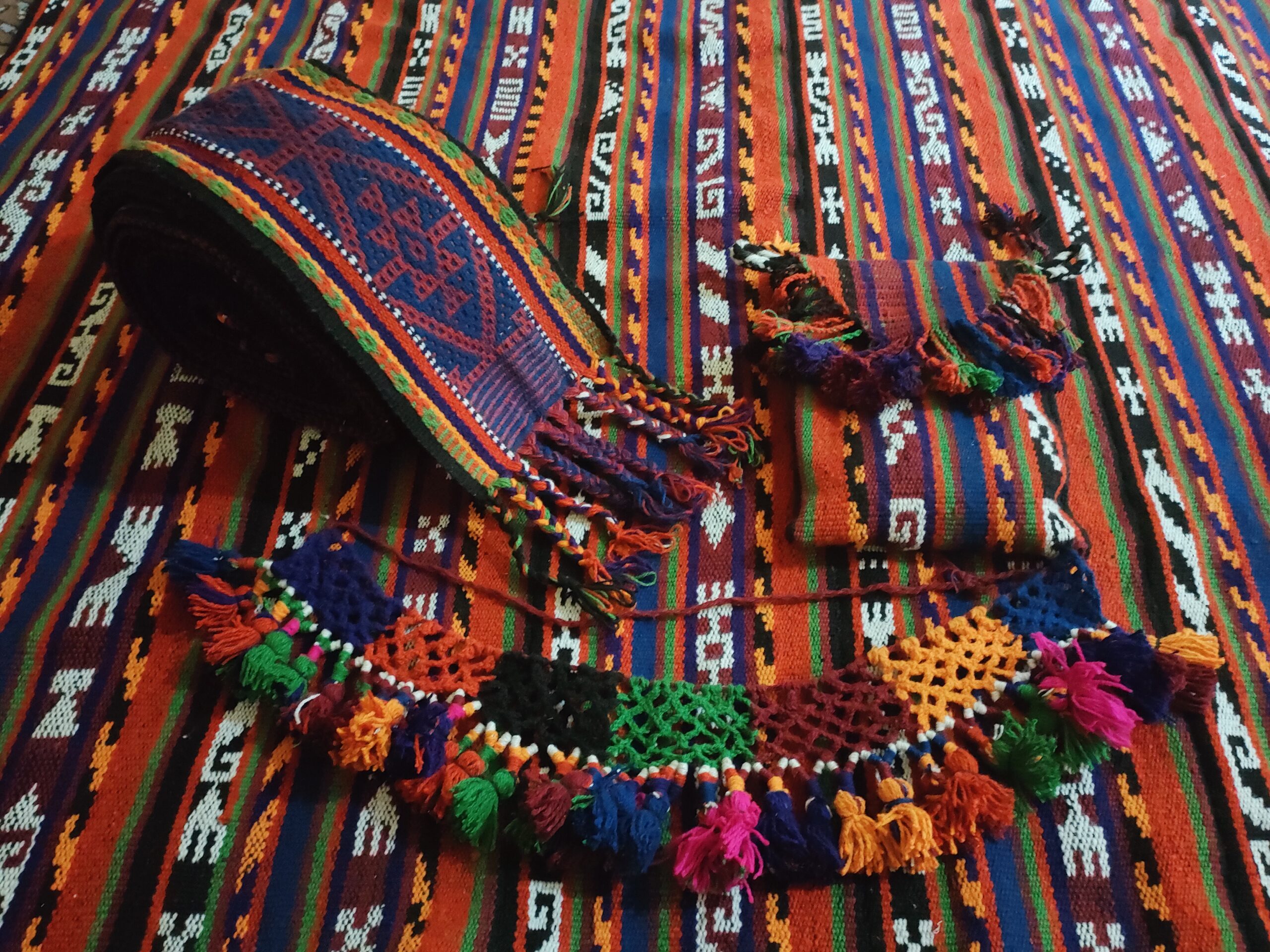
Seeking the Positioning of Ethnographers
In the past, the use of the terms “our” culture and “their” culture has been problematic in researchers’ cultural representation or ethnographic activity. I would like to add “you” to this mix. “You” can trace the contours of a different culture as a stranger and stand side by side as a friend. Although “you” is different from “our,” when sharing time and space, “you” and “I” can become “we.”
In the future, I intend to share the technique of flat weaving with young women in the village who began to show interest in it as I learned. With the help of older women who know it well, I would like to reproduce opportunities to hand down the technique. In this activity, I can take the position of an observer and a researcher, or I can collaborate with them as a bride (or something like that). In this way, I would like to create an ethnography of the nomadic culture of Uzbekistan and use it as a foundation to develop my research further to elucidate the traditional culture of Turkic nomads.
Notes
[1] Мошкова, В. Г. 1970. Ковры народов Средней Азии конца XIX–начала XX вв (Carpets of the People of Central Asia of the Late XIX and XX Centuries). Ташкент: Издательство «ФАН» УзССР.
[2] Гюль, Э. 2019. Ковры Узбекистана: история, эстетика, семантика (Carpets of Uzbekistan: History, Aesthetics, Semantics). Ташкент: Art Flex.
This article is also available in Japanese. >>
「ウズベク牧畜民とともに生きる技術を学ぶ」
(志田夏美)




